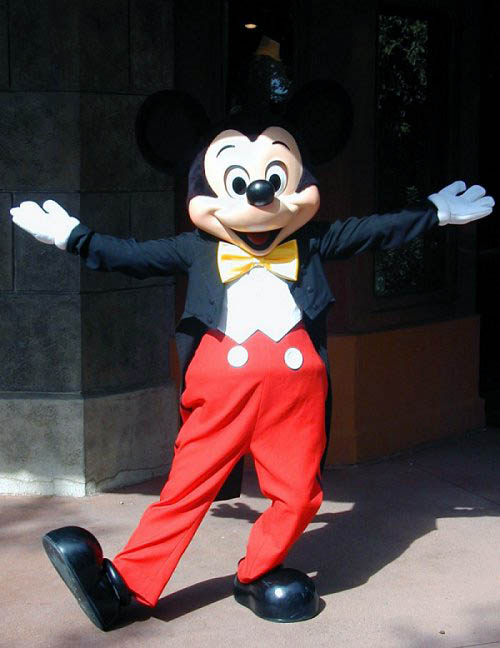Disneyland, 2005
by Rob Zaretsky
Today, our guest, historian Rob Zaretsky, revisits Disneyland. The University of Houston presents this series about the machines that make our civilization run, and the people whose ingenuity created them.
Last week I went to Disney World with my family. More than thirty years had passed since my last visit to its earlier incarnation, Disneyland. The Monorail, I'm here to report, still runs on time. But, happily, it runs toward the past, not the future.
We left for the Magic Kingdom at dawn with the hope to beat both the crowds -- ingeniously controlled by Disney -- and the threatening weather, which Disney does not control -- yet. In fact, when it did rain later that day, it seemed unreal, tantamount to an act of lèse-majesté in that empire of make believe.
Once at the empire's gates, we saw a father struggling with his tearful five-year-old. The child had dug in his heels at the first of countless souvenir stands. "We didn't come here to look at toys!" the father was shouting. "Oh yes you did," I muttered. Is there a more perfect example of product placement than Disney World? The synergy borders on tautology: Disney is its own product.
Once inside, I found Disney had changed yet still remained the same. Some rides had disappeared -- 20,000 Leagues under the Sea had sunk without a trace. Other attractions survived, but were daubed with rouge. Take the mechanical parrots of the Tiki Room. They had once been the avian equivalent of the Mormon Tabernacle Choir. Now the birds sing hip-hop and feathers are gently ruffled by Iago, the lovably nasty character from Aladdin.
And Tomorrowland? It is too glib, perhaps, to dismiss as Yes-terdayland. Still, as we trudged past pavilions and rides whose architecture seemed inspired by the tailfins of a '56 Chevy, I grew nostalgic. Nostalgic for the way we would never be, for a tomorrow as innocent and improbable as a Jetson cartoon. We had stepped back into the future.
My true future -- my children -- helped me conjugate the swirling tenses. My six-year-old, Ruben, listened keenly at the Swiss Family Treehouse, where I became an archaeologist of Disney schmaltz and artifice. His eyes opened wide as I lectured on this antique concrete facsimile of an even older movie set. You see, in a world of Game Boys and Play Stations, the tree house somehow seemed authentic.
In fact, Ruben was most taken, in the end, by the most human elements. Actors dressed as Pooh Bear and Tigger touched him deeply -- far more deeply than did the ghostly holograms at the Haunted Mansion. And the parade down Main Street! I was worried that Ruben would find the floats festooned with Disney heroes cheesy, if not downright archaic. Yet he was mesmerized. These fairy tale characters were real. They spoke to him, he spoke back, and he has not stopped speaking about them since. In the midst of this realm of high-tech, Ruben was stubbornly attached to the simple, humane, everyday elements.
Tomorrowland? I reserve judgment. But as for the future, I see it unfolding in Ruben, and it works.
I'm Rob Zaretsky at the University of Houston, where we're interested in the way inventive minds work.
Robert Zaretsky is professor of French history in the University of Houston Honors College, and the Department of Modern and Classical Languages.
Here is the Disney World Home page: https://disneyworld.disney.go.com/
I wish to thank Mike Bunyan for pointing out that it was, in fact, the 1957 Chevy and not the previous year's model -- which I originally claimed -- that preened itself on its sweeping tailfins.

(photo by John Lienhard)